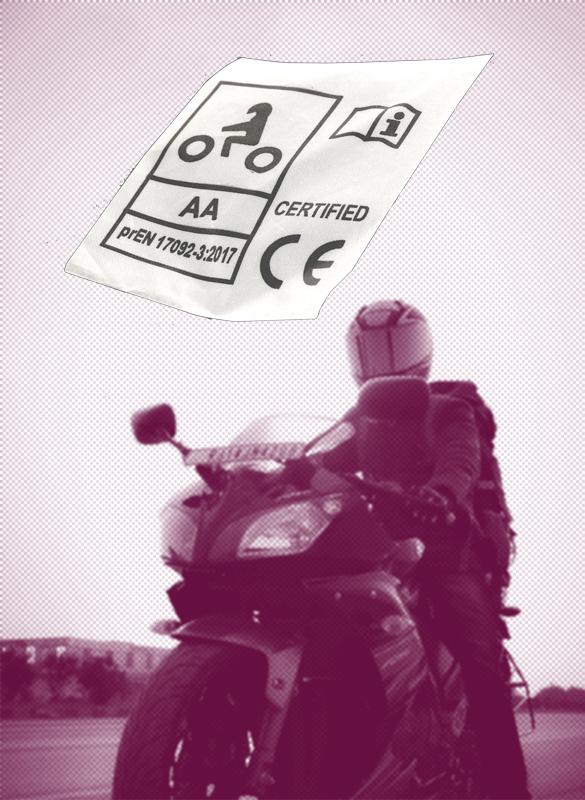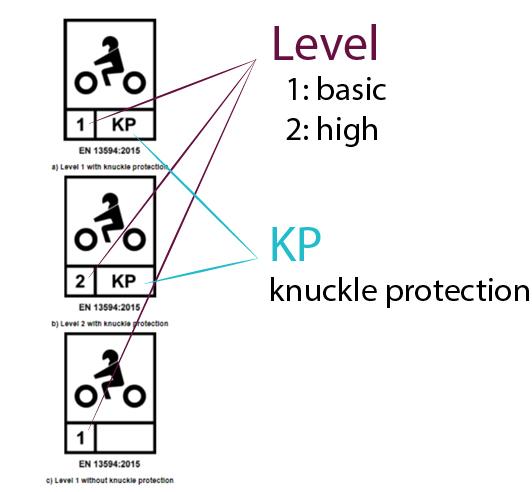Motorcycle garments and gloves are intended to provide the motorcycle riders with a certain level of protection without impairing his/her mobility while riding. It must be designed to provide protection against the risks that may occur during different riding activities (from racing to recreational).
EN 17092:2020 (1-6): Protective garments for motorcycle riders distinguishes five protection classes for protective clothing for motorcycle riders and defines the basic performance requirements for each class.
Protective gloves for motorcycle riders are tested according to EN 13594:2015: Protective gloves for motorcycle riders - Requirements and test methods.
Since April 21, 2018, protective clothing for motorcyclists falls under the “(EU) 2016/425 Personal Protective Equipment” regulation and shall therefore be certified by a notified body.
As of today Centexbel (notified body #0493) is accredited to offer this service to manufacturers and distributors of protective motorcycle clohting and gloves.
Protective clothing for motorcycle riders
EN 17092 defines both the material and construction requirements for motorcycle clothing and the ergonomic requirements for riding activities. There are 5 protection classes, with the AAA class offering the highest level of protection and the A class the lowest. Classes B and C are considered as additional protection levels.
Class AAA: Typical examples of this class are one or two piece leather suits suitable for use on racetracks. These models have a very high abrasion resistance, but offer low ergonomic flexibility. (EN 17092-2)
Class AA: Motorcycle garments suited for touring riders, protecting against weather conditions and having a relatively high abrasion resistance. The driver's ergonomics are less affected than with the AAA class. (EN 17092-3)
Class A: The garment is light, flexible and well suited for leisure and city driving, but provides the lowest abrasion protection level. (EN 17092-4)
Class B: Clothing in this class does not provide impact protection, only abrasion protection. (EN 17092-5)
Class C: This class includes protector ensembles which are held together with only one carrier made of mesh material and therefore only offer impact protection. (EN 17092-6)
The protection class defines, among other things, the robustness of the protective equipment
Marking
Personal protective equipment that meets the requirements of Regulation (EU) 2016/425 should also be CE marked. The label of the motorcycle clothing must contain a pictogram of a motorcyclist, the protection class achieved, the standard according to which the clothing was tested, and the name and number of the notified body.
The label shall also include a “booklet sign”. This is an indication to the customer that the product is accompanied by information from the manufacturer that has to contain the following information:
- The full address of the manufacturer or his authorized representative in the European Union.
- Instructions on how to select the appropriate protection class.
- Declaration to the CE label.
- Instructions on how to combine the motorcycle clothing with other protective elements and on how to use and adjust the protectors.
- Detailed explanation of the protection class.
- Instructions on how to store and dispose of the protective equipment.
Protective gloves for motorcycle riders
EN 13594:2015 - Protective gloves for motorcycle riders - Requirements and test methods specifies the requirements for sizing, ergonomics, innocuousness, mechanical properties, impact protection, marking and information for users. It also describes the appropriate test methods.
Tests according to EN 13594 include:
- Sizing and cuff length
- Restraint: An adjustable restraint system shall be incorporated into the wrist or cuff.
- Tear strength
- Seam strength
- Cut resistance
- Impact abrasion resistance
- Impact protection of knuckles
Marking
- The label shall be at least 10 mm wide and be permanently attached to the glove.
- Underneath the pictogram, the number and year of the European standard (e.g. EN 13594:2015) are written by means of printing, embossing or any other legible and durable technique.
Information supplied by the manufacturer
Gloves for motorcycling shall be supplied with information and instructions for use. Instructions shall be precise, comprehensible and in the official language(s) of the country of destination. They shall contain at least the following information:
- The full address of the manufacturer or his authorized representative in the European Union.
- A statement on the intended use of the gloves.
- Information of the specific hazards against which protection is given.
- Advice on how to select the correct size of the glove and how to check its fit.
- Advice on how to adjust the restraint system on the gloves.
- Advice about the use in combination with a jacket or other PPE, if applicable.
- A warning about the limits of the protection provided by the gloves.
- Care and cleaning instructions; if applicable, also the maximum number of cleaning cycles.
- Instructions on how to examine the gloves for wear and degradation to identify gloves which are no longer suitable to use.
- Explanation of markings and pictograms on the glove.
- If applicable, information concerning impact protection.






